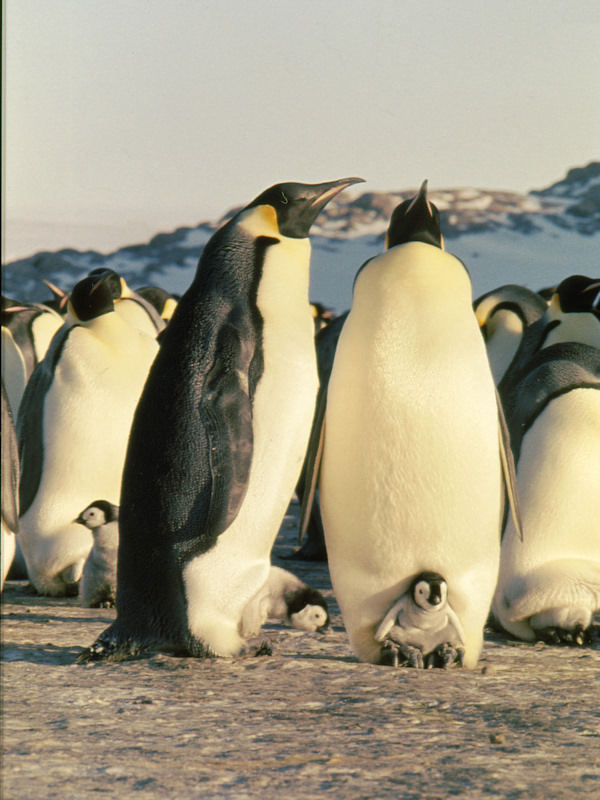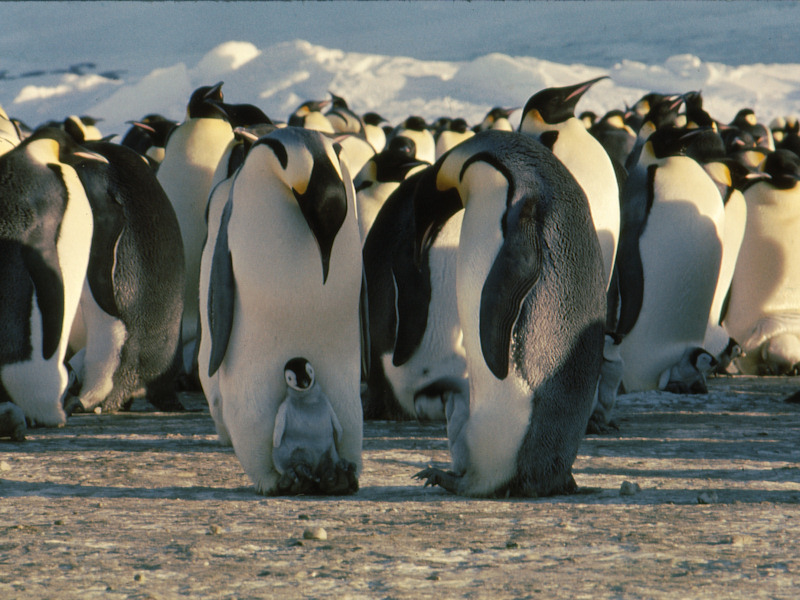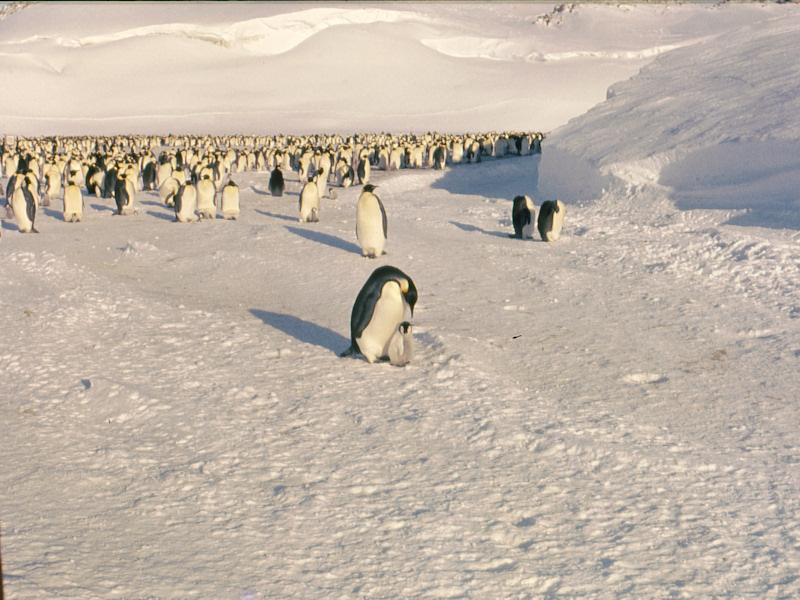
Photo album: " The emperor penguins"
Fly over a photo with the mouse to enlarge it
Click on a photo to open it in a new window
The emperor penguins arrived around the end of March and they gathered between Rostand and Carrel islands and nunatak (*) of Bon Docteur. In this place well protected from winds, the pack ice can remain quite a long time. Couples formed and females laid their single egg in April and gave it, at once, to their male, then they departed towards open sea to find food. The male incubates the egg, keeping it on its feet, well protected by a fold of its abdomen skin. When the female come back, the chick is already hatched and the male, which has not eaten for three months has begun to nourish it. The female retrieves the chick on its feet and takes to feed it over and, at last, the male can begin its long march toward the open sea where it will be able to eat. When it arrived in March, it weighed forty kilograms, when it will be able to have food again, four months later, it will have lost half of its weight.
(*)
Nunatak is a term used in geology and in glaciology to define a mountain summit
not covered with snow or ice which rises in the middle of a glacier or a surface
covered with ice like the continental glaciers of Antarctic or Greenland.
The nutanak is like an "island" in the glacier.
The term derives from the Inuit language and has begun to be used around
1880.
(From Wikipedia, the free encyclopaedia)
 |
We are walking toward the emperor penguins' colony ("rookery"), situated at about one kilometre from Pétrels island. |
 |
From the summit of Rostand island we have a global view of the rookery. |
 |
The rookery, before the females left, amounted to about ten thousands penguins. |
 |
Emperor penguins have no territory, on the contrary to other penguin species, and they accept to be very close to one another. |
 |
The chick, on the left, is asking its mother (or father?) food. |
 |
A parent, at the second line, is nourishing its chick, regurgitating food in its beak. |
 |
After the return of the females, parents come and go in turn, between the rookery and the open sea, to eat and then to nourish their chick which is growing up and needs more and more food. |
 |
The chicks are growing up and shortly they will be able to stay outside without the thermal protection of their parent. |
 |
Even if, from time to time, the chicks go back to warm up on their parent's feet, they are now able to regulate their temperature alone. |
 |
Even if the chicks can stand alone on the ice, they never go far away from their parent. |
 |
As the weather is fine, this emperor penguin and its chick take advantage to take a walk a little farther from the colony. |
.
.
.
.
.
.
.